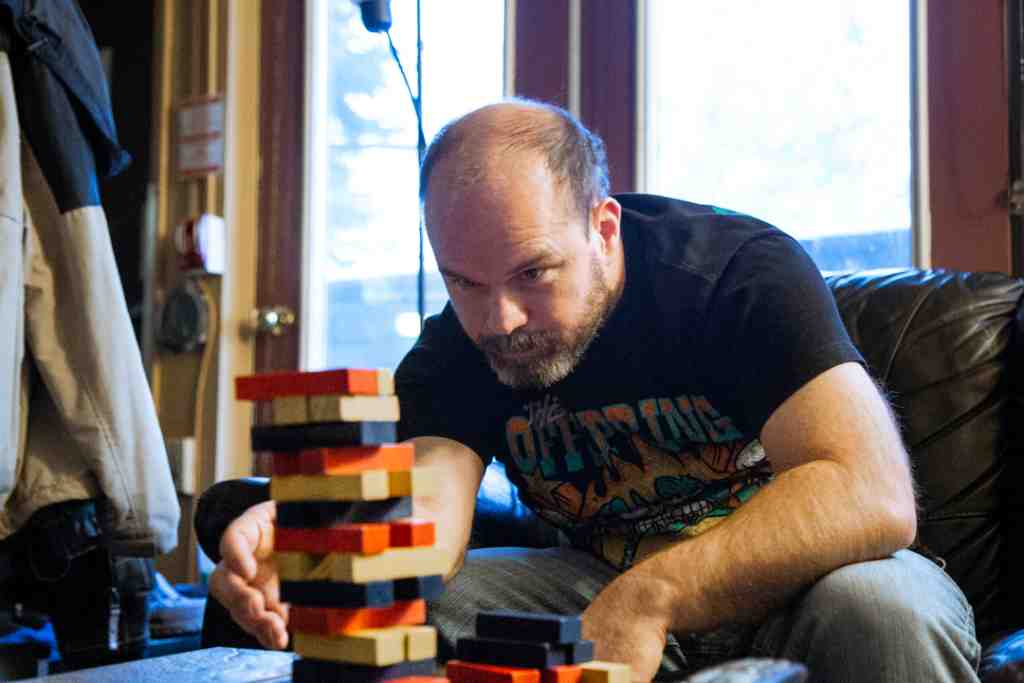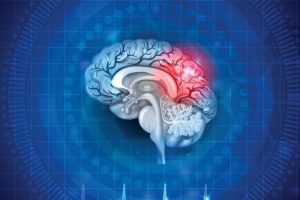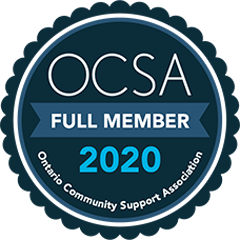Physical Changes
After a brain injury, you or your family member may experience physical changes which can be temporary or permanent.
Some people experience a number of these changes and some do not experience any. It depends on the severity of the brain injury and the nature and location of the brain injury.
Some common issues include difficulties with the following:
Arousal:
Arousal is a person's ability to be alert. In the early stages of recovery, the person may not be very alert or their level of alertness may fluctuate throughout the day. Arousal usually improves as the person recovers. People become more able to participate in rehabilitation as they are more able to stay alert for longer periods of time.
Movement/mobility challenges can include:
- Paralysis or weakness in one or both sides of the body
- Poor balance
- Poor coordination
- Low endurance (becomes easily tired with activity)
- Difficulty planning movements
- Muscle stiffness or trembling
- Contractures (when muscles or tendons become permanently shortened) (this causes a limb to be deformed but may be helped by surgery or splints)
- Slow reaction time.
As can be seen motor problems can be quite varied, involving injuries to the complex motor (movement) systems of the brain, spinal cord, and peripheral (non-brain) nerves. Hemiparesis is a paralysis (lack of movement) of one side of the body; quadriparesisinvolves both legs and both arms. Other movement problems may include poor balance, difficulty planning and carrying out movements (apraxia), poor coordination (ataxia), or unstable muscle tone (spasticity).
Combativeness and restlessness are exhibited by many persons with head injury early after the trauma, when the brain is incapable of an orderly control of movements and intentions. Vestibular problems result from heightened sensitivity to movement, and proprioceptive problems result from deficits in feedback from the muscles to the brain. Concurrent with brain injury, the person may have sustained damage to muscles and joints (orthopaedic deficits), causing similarly appearing problems.
Speech and language:
Some people have difficulties communicating after a brain injury. Sometimes the problem can be physical in nature (e.g., not being able to make sounds or volume limitations in speaking which maybe the result of subtle breathing problems and injuries to the nerves of the vocal cords). Dysarthria refers to difficulty pronouncing or articulating words or phrases. Sometimes the problem can appear more cognitive in nature. For example, some people can make sounds and words but cannot find the right words to say what they want to say either through speech or writing (expressive aphasia),or they cannot understand what is being said to them (receptive aphasia).
Swallowing:
A person may not be able to chew or swallow regular foods or drink liquids after a brain injury.
Sometimes they will require a change in diet (i.e. pureed food or thickened fluids). Sometimes a person may not be able to eat enough to meet their needs. They will have a tube put in their nose or stomach to give them proper nutrition.
These difficulties are usually temporary (in the early stages of recovery) but for some with a more severe brain injury they can persist.
Bladder/bowel control:
Following a brain injury, the person may be unable to control their bladder or bowel. The bladder or bowel may be overactive or underactive. Or the person may not feel the urge to go to the bathroom or know how to respond if they do. People are often at increased risk for bladder infections because infections are common if the bladder is not emptied regularly and completely.
Pain:
Pain and headaches are common after a brain injury. Sometimes they go away as the person improves physically. Sometimes they can be more chronic and require ongoing pain management. Pain can make it difficult for people to concentrate and it can also affect the person's mood and sleep.
Sleep:
Sleep patterns can be changed after a brain injury. Sometimes people have trouble getting to sleep, staying asleep or getting the right level of sleep. A referral to a sleep clinic may be necessary if the issue is ongoing.
Regulatory Problems, Fatigue:
Becoming easily fatigued is one of the most common regulatory problems reported by head - injured persons, especially relatively soon after injury. Recovering from a serious injury takes a lot of energy. Rehabilitation is hard work and can drain a person physically and mentally. If the person has difficulty paying attention, remembering or thinking, they now have to work harder just to do simple things. If fatigue is a problem the person will need to pace themselves. This means that they may be only be able to engage in activities for short periods of time.
The person may not realize that they are getting fatigued and may think they can be as active as they were before the brain injury. They may need to be reminded to rest. Fatigue often gets better as the person improves, but for some people it will be an ongoing problem and they will have to schedule their activities and appointments accordingly
Brain injury also may produce changes in the body's ability to regulate sleep, temperature and food and liquid consumption. Loss of ability to sense the need to empty one's bowels or bladder may require special attention to strict habits (see above). Sexual arousal may be greatly reduced or increased after damage to specific deep areas of the brain. Acne, sweating, and other physical disturbances may occur due to disruption in the brain's control mechanisms.
Susceptibility to overload is almost always seen, at least early on, as a consequence of head injury. Sometimes this is easily observed in that the individual cannot seem to take much stimulation - too many people, colours, shapes, sounds, and things going on at the same time. Returning to school or work too soon may reveal this problem, not only in being unable to keep up with former demands but in experiencing stress with too much happening at once. Of course, this problem emerges in busy environments more than in calm ones. Being sensitive to the potential for subtle overload can help prevent such problems.
Seizures:
Seizures can occur after brain injury. They can cause a part of the body or the whole body to shake, or they can cause the person to appear to black-out (be non-responsive for a few seconds). Seizures can occur soon after the injury or not until months or years later. Doctors may prescribe anti-seizure medication that can help control the seizures. Sometimes doctors do this as a precaution after a brain injury. If a person has had seizures, it is unsafe for them to drive a car and the doctor may recommend that their driver's license be taken away.
Senses:
The sensory systems (touch, vision, smell, hearing, taste) are as complex as motor systems. Brain injury may cause a variety of changes to any of the senses. Hemiesthesia is the loss of touch sensation (including pain and pressure) on one side of the body. Heightened sensitivity to touch results in a phenomenon known as tactile defensiveness. Loss of ability to see things on one side of the visual field (visual field deficit), neglect or ignoring things on one side of the body (unilateral neglect), double vision (diplopia), or problems in depth perception and visual acuity may affect the visual sense. Changes in auditory (hearing), olfactory (smell), or gustatory (taste) senses may occur as well. The nerves responsible for smell and taste are particularly vulnerable to damage during trauma, and many head-injured persons report loss of these senses.
The person could have any of the following problems:
- Over-sensitivity to touch
- Inability to feel pain, touch, hot or cold
- Loss of vision, double vision or blurry vision
- Visual neglect (appear unable to see things on one side of their body or room)
- Visual processing(Problems with the interpretation of visual information, such as difficulties with the recognition of objects or faces, or with discriminating features of objects. Individuals may not be able to judge space and distance. Visual impairments make many activities impossible or unsafe (e.g., driving))
- Changes in sense of smell or taste
- Ringing in ears
- Over-sensitivity to noise
.
DEFINITION OF ABI
Developed by the Clinical Data Working Group of the Toronto ABI Network and adopted by their Advisory Committee
TYPES OF HEAD INJURY
Describes the different types of brain and head injuries, including the complication and recovery process.
PHYSICAL CHANGES
Describes how brain injury may lead to physical changes which can be temporary or permanent, severity and location of the brain injury.
COGNITIVE CHANGES
Describes how cognitive changes after brain injury can affect the way a person thinks, learns and remembers.
EMOTIONAL/BEHAVIOURAL CHANGES
Describes changes in a person's emotional reaction or behaviour after a brain injury, often the most difficult for the individual and families to deal with.
HORMONAL CHANGES
Describes some of the common issues as they relate to hormonal changes following an aquired or traumtic brain injury.
FUNCTION & SYMPTOMS
Describes brain anatomy, its functions and symptoms following an aquired or traumtic brain injury.
3D BRAIN INTERACTIVE
Information on disorders, brain damage, case studies, and links to modern neuroscience research.
BRAIN STIMULATION
Describes the anatomy of the brain and its function with a special interactive feature.
Ranchos Los Amigos Scale
Describes this medical scale used to assess individuals after a brain injury, based on cognitive and behavioural presentations as they emerge from coma.
STATISTICS
Download the PDF document and view the staggering true numbers - and see how it compares with other health conditions.





